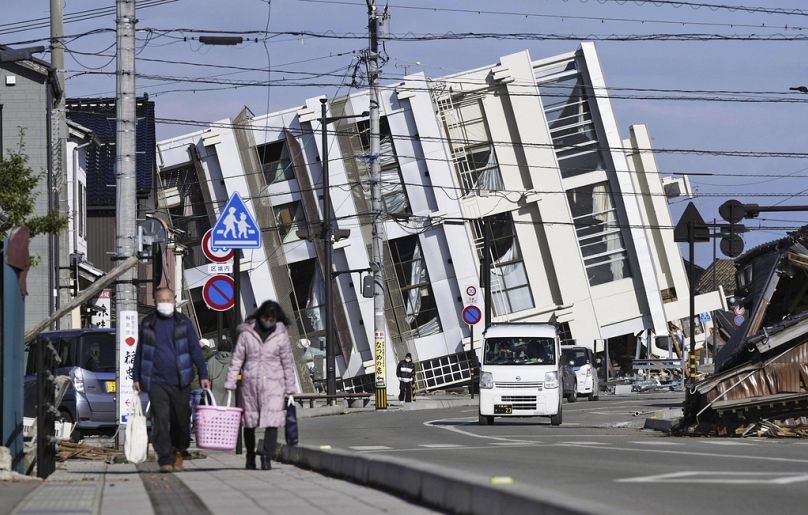Dozens of people have been hospitalised and rescue operations are still underway as authorities warn more quakes could be on the way.
The 7.6-magnitude earthquake that struck the west coast of central Japan on Monday has killed at least 55 people, according to the latest figures, with authorities saying many more are trapped under the rubble of collapsed buildings.
Wajima, a town of about 27,000 people some 500 kilometres from Tokyo and very close to the epicentre, was hit hard by the earthquake. Around 25 buildings are said to have collapsed, many of them private homes.
Dozens of people have been hospitalised across several cities and rescue operations are still underway, with the death toll expected to rise in the coming hours.
Footage from public broadcaster NHK on Tuesday morning showed a seven-storey building collapsing and smoke billowing in a central area of Wajima.
A fire in the prefecture has affected more than 200 buildings and is still raging in some areas, although officials say there is little chance of it spreading further.
Japanese Prime Minister Fumio Kishida held a press conference this morning in which he said he would take charge of disaster management: "I will be the director general, mobilising the Self-Defence Forces, the Japan Coast Guard, the fire brigade and the police."
He said it was proving extremely difficult for vehicles to access areas in the north of the Noto peninsula and that the government had already sent supplies by ship.
He urged residents in the affected areas to "act safely" as "the risk of house collapses and landslides is increasing in areas where the tremors were strong".
According to the latest figures at midday, some 32,000 people have been evacuated in Ishikawa and Toyama prefectures and other nearby areas, while local air and train services remain suspended.
About 1,000 Japanese Self-Defence Forces personnel are involved in rescue operations, and more than 46,000 people remain evacuated in Ishikawa and Toyama prefectures.
The number of households without power, particularly in Ishikawa, is now in the tens of thousands.
Fortunately, the sea level rise recorded in several locations in Japan, and even in neighbouring South Korea, has not caused major damage.
Although casualty numbers from the earthquake are still climbing, a combination of prompt public warnings relayed via broadcasts and phones and a quick response from the general public and officials appeared to have limited some of the damage.












